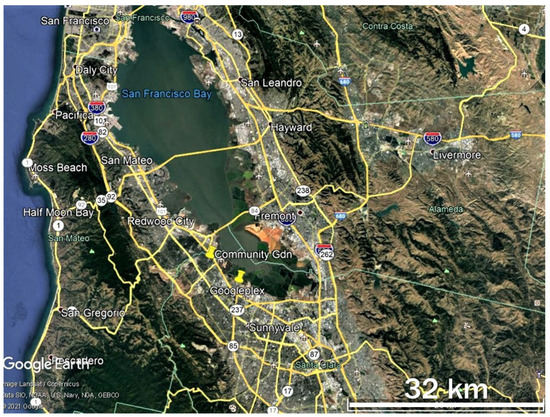2024-07-29 ワシントン州立大学(WSU)
 The rise of winter-breeding monarchs signals a potential adaptation to warmer winters and offers an alternative to the traditional overwintering of non-breeding butterflies at sites in places like Pacific Grove, Santa Cruz and Pismo Beach.
The rise of winter-breeding monarchs signals a potential adaptation to warmer winters and offers an alternative to the traditional overwintering of non-breeding butterflies at sites in places like Pacific Grove, Santa Cruz and Pismo Beach.
<関連情報>
- https://news.wsu.edu/press-release/2024/07/29/winter-breeding-offers-lifeline-for-monarch-butterflies-in-northern-california/
- https://bioone.org/journals/the-journal-of-the-lepidopterists-society/volume-78/issue-2/lepi.78i2.a6/Viability-of-Monarch-Butterfly-Danaus-plexippus-Lepidoptera–Nymphalidae-Pupae/10.18473/lepi.78i2.a6.short
- https://www.mdpi.com/2075-4450/12/10/946
米国カリフォルニア州サンフランシスコのサウスベイ地域における冬期のオオカバマダラ(Danaus plexippus)(鱗翅目:タテハチョウ科)の蛹の生存可能性 Viability of Monarch Butterfly (Danaus plexippus) (Lepidoptera: Nymphalidae) Pupae during Winter in the South Bay Area of San Francisco, California, USA
Maria C. Schaefer, David G. James
The Journal of the Lepidopterists’ Society Published:4 June 2024
DOI:https://doi.org/10.18473/lepi.78i2.a6
Abstract
Monarch butterflies, Danaus plexippus L., in western North America are undergoing a seemingly volatile shift in seasonal population dynamics which includes novel winter-breeding on non-native milkweed in urban areas of northern California. The survival, viability and outcome of monarch pupae in the wild was evaluated for the first time by regular monitoring of a cohort of 104 pupae in a San Francisco managed urban landscape during the winter of 2021/22. Seventeen pupae were destroyed by landscaping activities. Almost half (49.4%) of the remaining pupae eclosed, with ∼ 70% likely infected with varying levels of the protozoan parasite Ophryocystis elektroscirrha (OE). A third of the pupae (32.2%) died of unknown causes, while the remainder (18.4%) disappeared, presumed predated. Two monarchs were killed while eclosing, by European paper wasps, Polistes dominula (Christ, 1791). Microscopic examination of pupal exuviae for spores of OE appeared to be a satisfactory proxy for microscopic examination of butterfly abdomens, in determining the presence/absence of infection. The developing importance of winter breeding in western monarch ecology necessitates modifications to conservation guidelines that enhance the survival of immature stages, acknowledging the role of non-native milkweeds while minimizing parasite infection.
カリフォルニア州サンフランシスコの都市部サウスベイにおけるオオカバマダラ(Danaus plexippus)の冬季繁殖に関する初の個体群調査 First Population Study on Winter Breeding Monarch Butterflies, Danaus plexippus (Lepidoptera: Nymphalidae) in the Urban South Bay of San Francisco, California
David G. James,Maria C. Schaefer,Karen Krimmer Easton and Annie Carl
Insects Published: 18 October 2021
DOI:https://doi.org/10.3390/insects12100946

Simple Summary
Populations of western monarch butterflies, which formerly populated coastal overwintering sites in California in numbers exceeding one million, dwindled to less than 2000 in 2020/21. In the same winter, breeding populations of monarchs occurred commonly in the San Francisco Bay urban area for the first time. The urgent conservation need to understand this possible shift in overwintering strategy prompted this first study of the viability and ecology of monarch breeding populations in the South Bay urban area of San Francisco during January–June 2021. Adult monarchs along with eggs and larvae were common during winter and most of spring, utilizing non-native ornamental milkweed and multiple nectar sources from native and ornamental plants. Evidence from weekly counts and tagged butterflies indicated increased dispersal to the north and east during late April-mid-May, possibly representing spring migration to the Pacific Northwest and eastern California. Infection of reared adult monarchs with a protozoan parasite was high. Winter breeding of monarchs in the San Francisco urban area as an alternative and sustainable overwintering strategy for the western US population will likely depend on the continued presence of ornamental milkweeds, sustainable co-existence of monarchs and protozoan parasites, and successful migration to the greater western US during spring.
Abstract
The western North American monarch butterfly population assessed by counts of non-reproductive overwintering butterflies at coastal sites in California declined to less than 2000 in 2020/21. Simultaneously, reports of reproductive monarchs increased in San Francisco urban areas, perhaps representing a shift in overwintering strategy. To better understand monarch winter breeding in the Bay area, we studied adult and immature populations in Santa Clara County during January–June 2021. Adult monarchs were common with numbers ranging from 0.23–1.54/min during ~30 min weekly surveys at one site, with lowest numbers late April to mid-May. Eggs and larvae, primarily on ornamental milkweeds, were found on nearly all survey dates with lowest numbers mid-late April to mid-May. Levels of infection of adults by the parasite Ophryocystis elektroscirrha were consistently high during the study (69.3–77.5%). From 499 monarchs tagged post-eclosion, recovery rates of 19.2–23.6% occurred from releases in January-February and May-June but only 11.9–13.0% from March-April releases. Although distances were small, butterflies tagged in April were recovered from greater distances than other months. Tagged monarchs flew primarily north or east. There were reduced numbers of adult monarchs during late April-mid-May with some evidence of northerly and easterly emigration at the same time from tagged butterflies, suggesting some movement out of the South Bay area, perhaps representing spring migration. We conclude that monarchs can successfully breed and maintain populations on ornamental milkweeds during winter at urban sites in the South Bay of San Francisco and may still migrate during spring to remain part of the wider western population.


